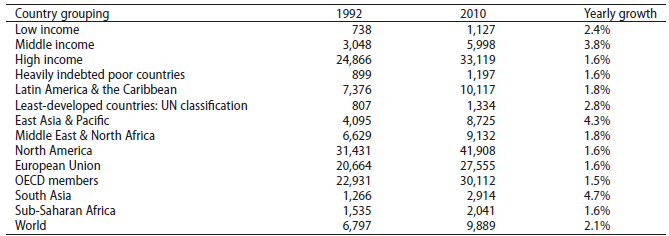About the research
The First International Conference on Nutrition in 1992 attended by delegates from 159 countries, including 137 ministers, representatives from 144 non-governmental organizations (NGOs), 11 intergovernmental organizations (IGOs) and 16 United Nations (UN) organizations, declared that “hunger and malnutrition are unacceptable.” Twenty-two years later researchers from the Universities of Reading, Bologna, London and the Food and Agriculture Organization (FAO) revisit the state of global nutrition and examine the importance of various policy interventions in driving change since 1992, with particular reference to the role of public policies that influence food prices and/or food availability, particularly agricultural policies, trade and investment policies, and consumer-oriented policies.
The study suggests that the main drivers of change have been technological changes in agriculture, food processing, food distribution, and international trade, along with economic growth. In the many regions in which dietary change has been observed, evidence indicates that income growth and modernization of food systems have been the dominant forces of change, and these changes are closely linked to urbanization and the increased participation of women in the workforce. Findings also show that international trade and liberalization of investment have been the key policy drivers of dietary change. The impact of these changes on preferences and lifestyles is critical, as is their impact on the availability of a range of foods that satisfy new demands.
The study received funding from the Food and Agriculture Organisation of the United Nations (FAO) and it was commissioned in light of the Second International Conference on Nutrition, organized by the FAO and the World Health Organization (WHO), which took place in November 2014. The outcomes of the Conference, which was attended by ministers and representatives of the members of the FAO and WHO, confirmed with profound concern that despite significant achievements in many countries, recent decades have seen modest and uneven progress in reducing malnutrition and resulted in a Framework for Action to address today’s major nutrition challenges.
Methodology
In order to examine nutrition and dietary changes the researchers reviewed a wide range of literature, from detailed global trade models to country-specific descriptions of change. They analysed the evidence through an economic lens, although the approach used for identification and assessment was much broader than the traditional neoclassical economics approach.
Figure 1 shows the framework for the discussion of dietary change presented in the study. The influencing factors are divided into two broad sets. One set, categorized as “trending factors,” captures the important developments over the last 20 years in technology, globalization, population, urbanization, and other sociodemographic factors such as the increased participation of women in the workforce. Another set includes the range of government policies that impinge on diets. These are divided into trade policy, domestic policy relating to agriculture and food, and consumer policy.
Figure 1: Influences on food consumption (Source: Traill et al., 2014)
Among other evidence, the study used data accessed through the UK Data Service about gross domestic product per capita in 2012, based on purchasing power parity from the World Bank World Development Indicators (as shown in Table 1). The data were used to analyse trends in income and their impact on diet as income is a well-recognized determinant of calorie intake and dietary quality, and economic growth is the obvious pathway toward reducing malnutrition. Table 3 shows the world average real per capita income rose by 2.1% per year between 1992 and 2010.
Table 1: Gross domestic product per capita, based on purchasing power parity (converted to constant 2005 international dollars) (Source: Traill et al., 2014)
The World Bank World Development Indicators data were also used to examine and compare the number of working women in different countries:
“Between 1992 and 2009, the female labor force increased by 20% in countries belonging to the Organisation for Economic Co-operation and Development (OECD), an increase of about 48 million women. Low-income and lower-middle-income countries have experienced 58% and 46% growth, respectively, which represents about 156 million women entering the workforce.”
Findings and applications for policy
The study has the potential impact of informing future public policies that influence food prices and/or food availability, particularly agricultural policies, trade and investment policies, and consumer-oriented policies. The findings have led to a background paper and presentation to the preparatory technical meeting before the Second International Conference on Nutrition identifying best practices and lessons learned for improving nutrition. The Conference took place in November 2014 and was attended by heads of state and other senior policy officials from the WHO and FAO member countries. Consequently the outcomes of the Second International Conference on Nutrition led to the Rome Declaration on Nutrition along with a Framework for Action, committing world leaders to establishing national policies aimed at eradicating malnutrition and transforming food systems to make nutritious diets available to all.
Publications and outputs:


